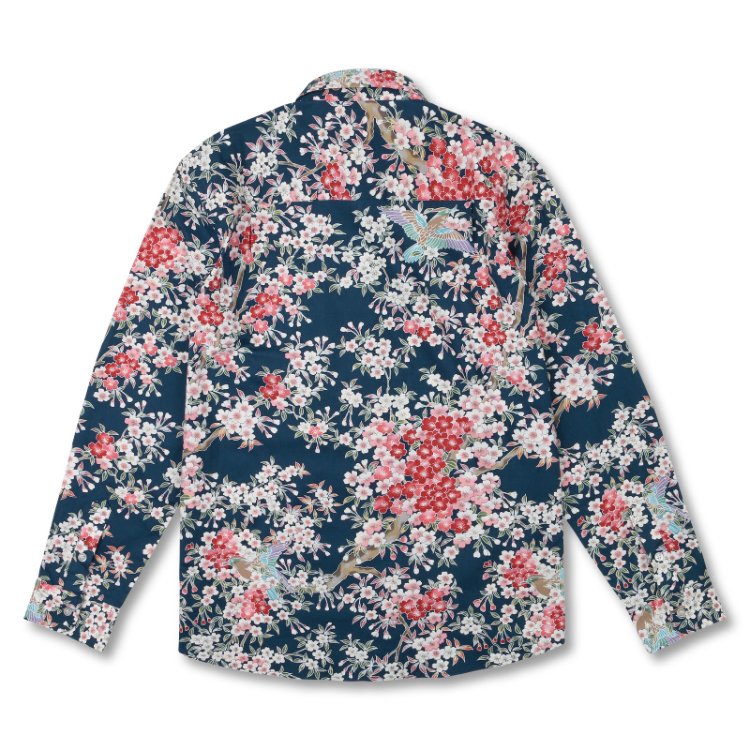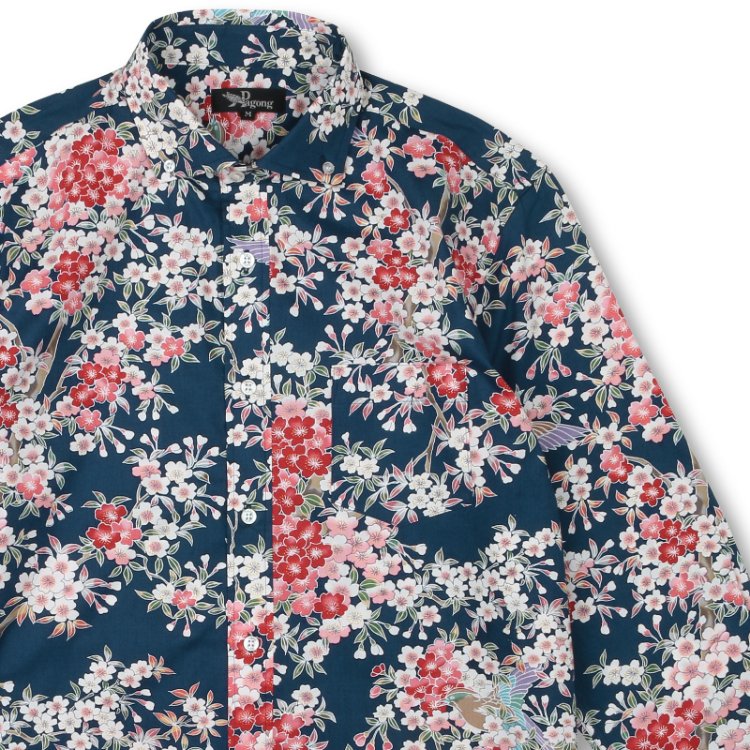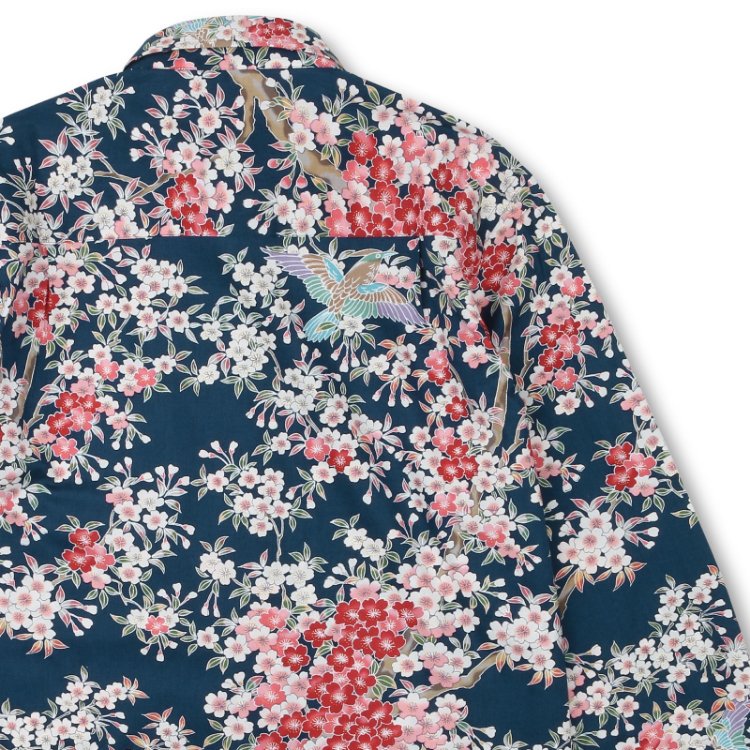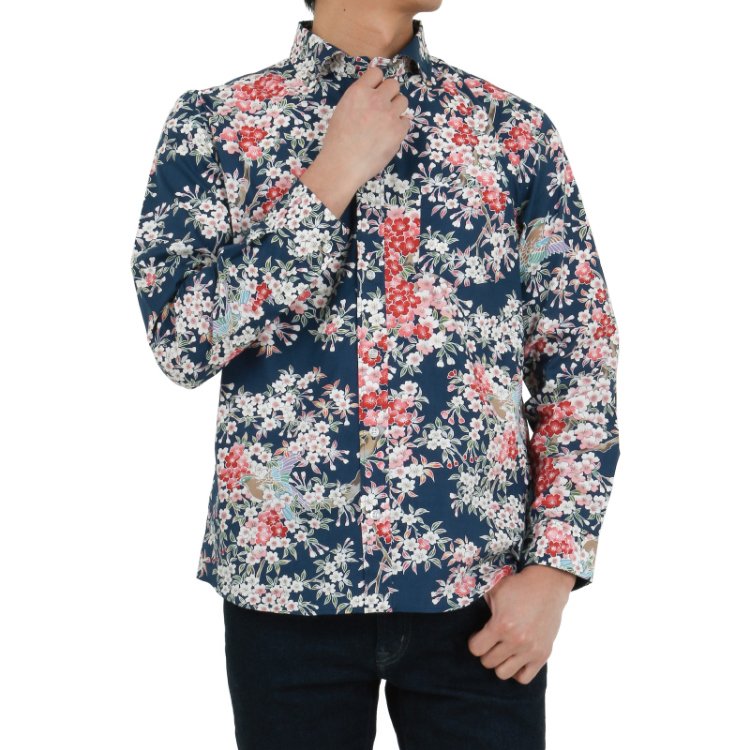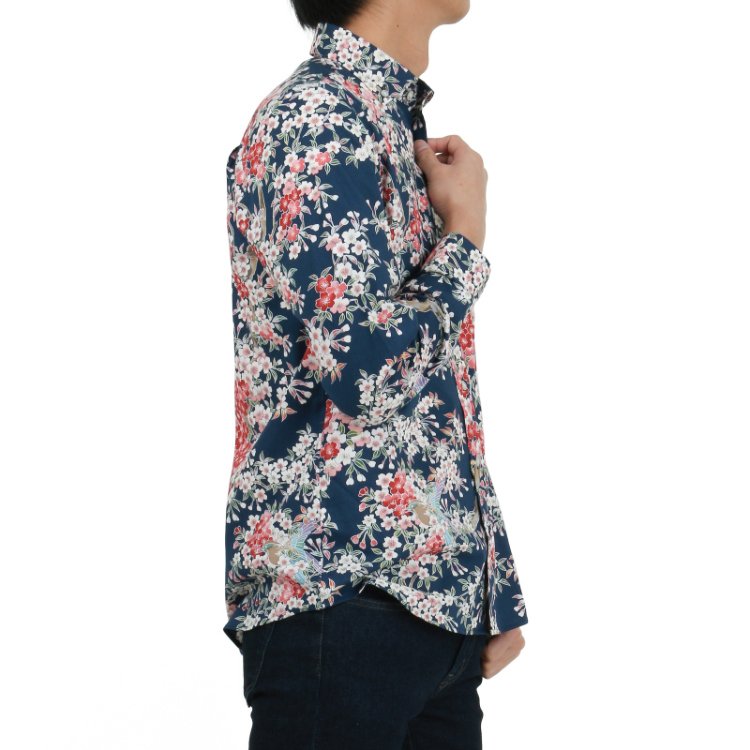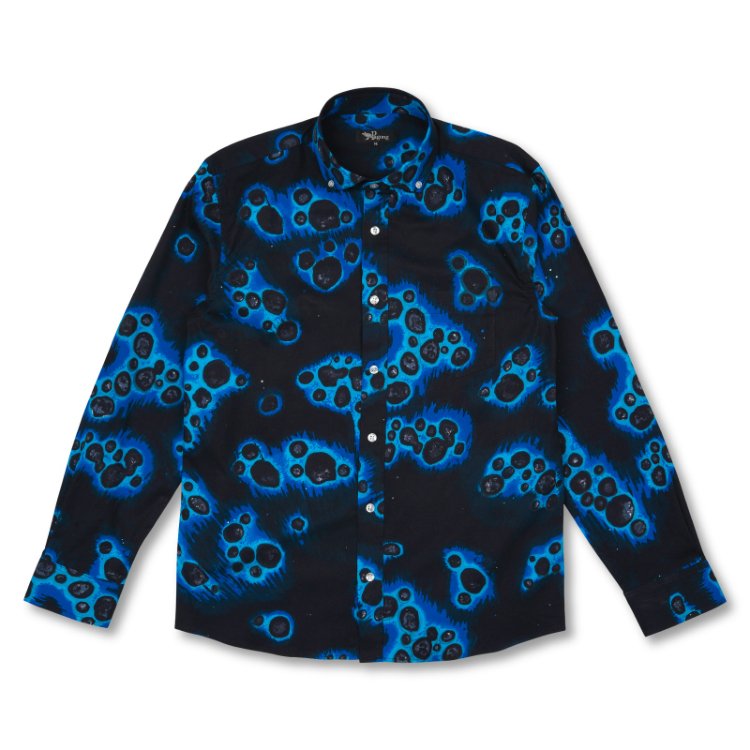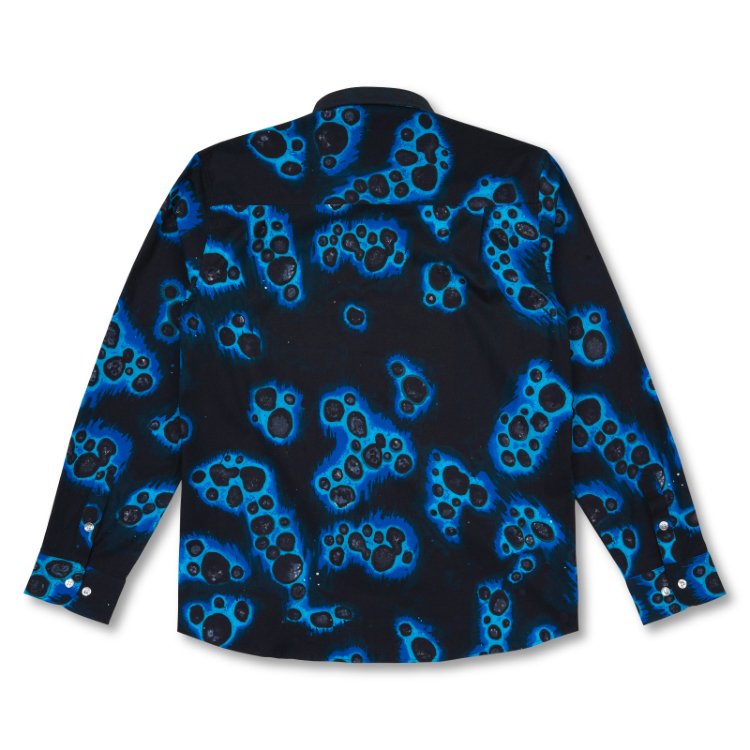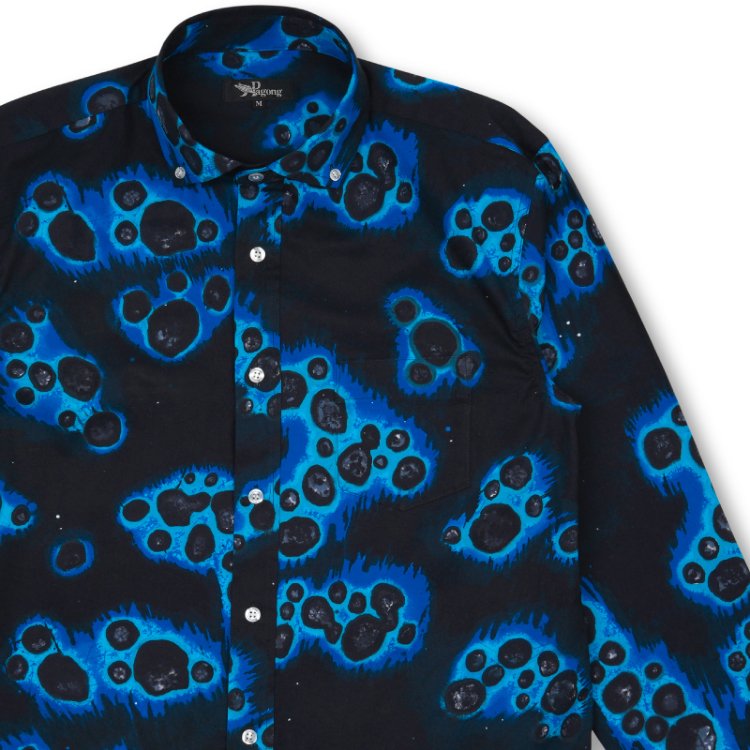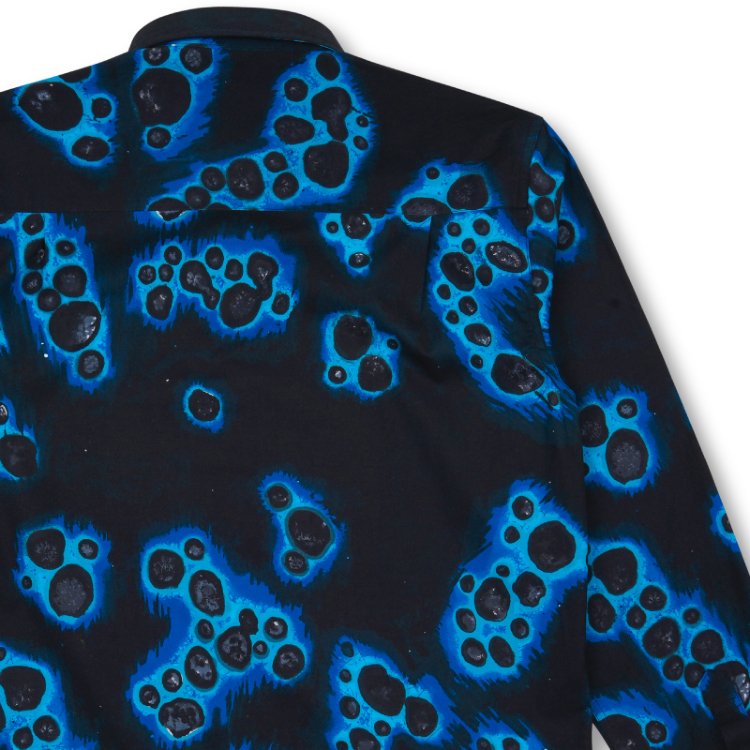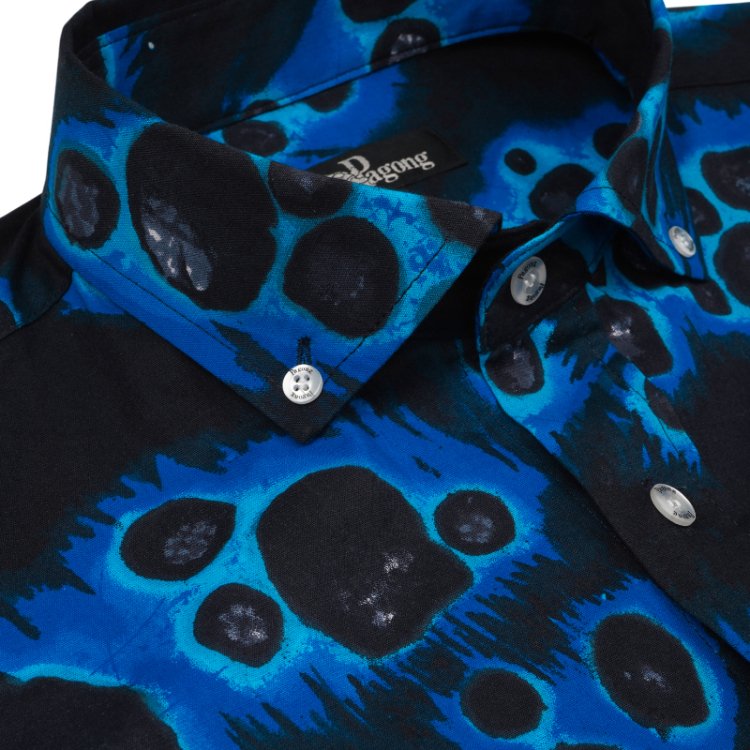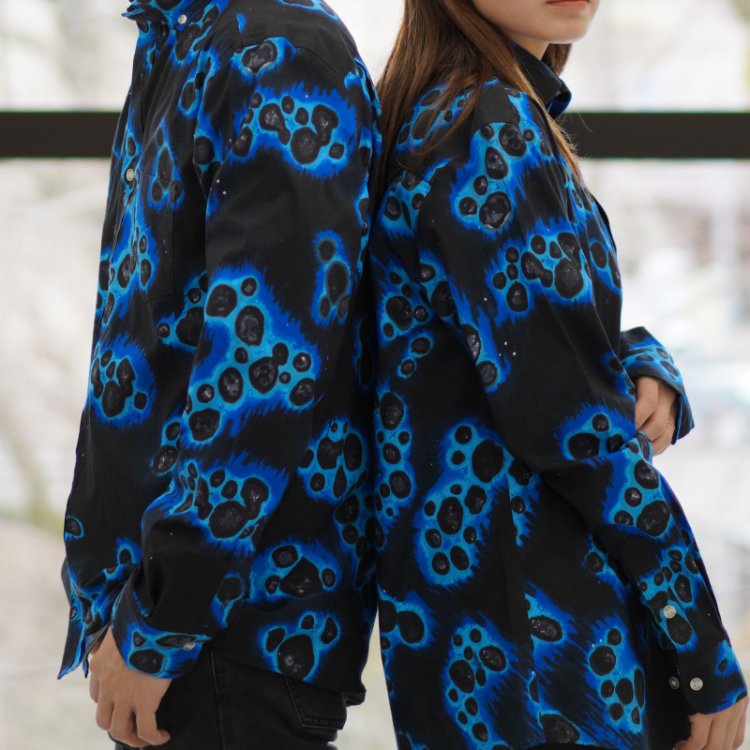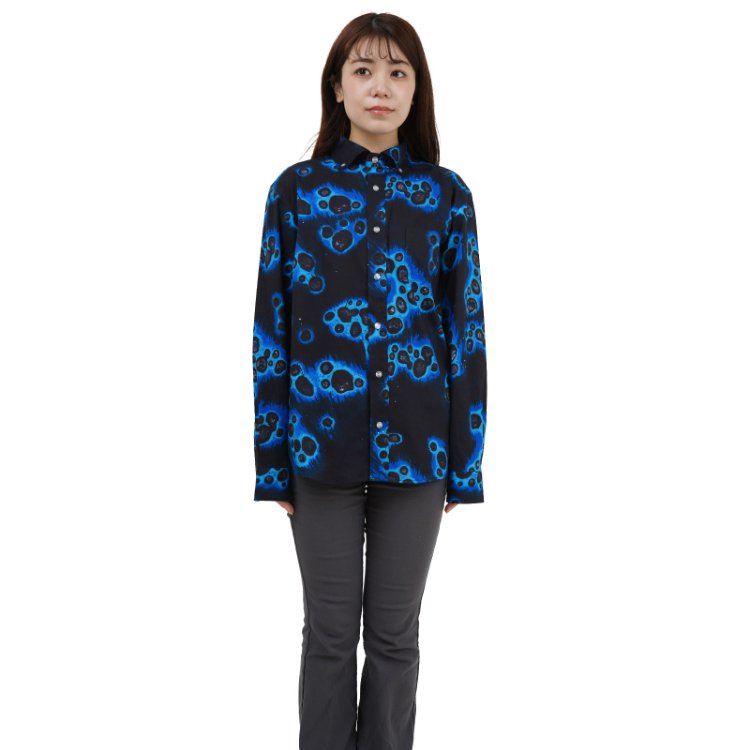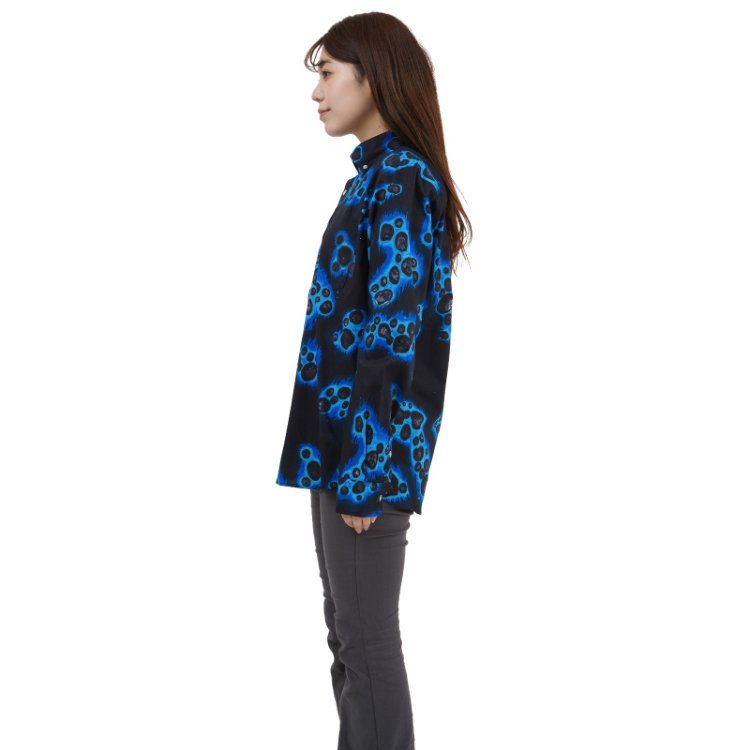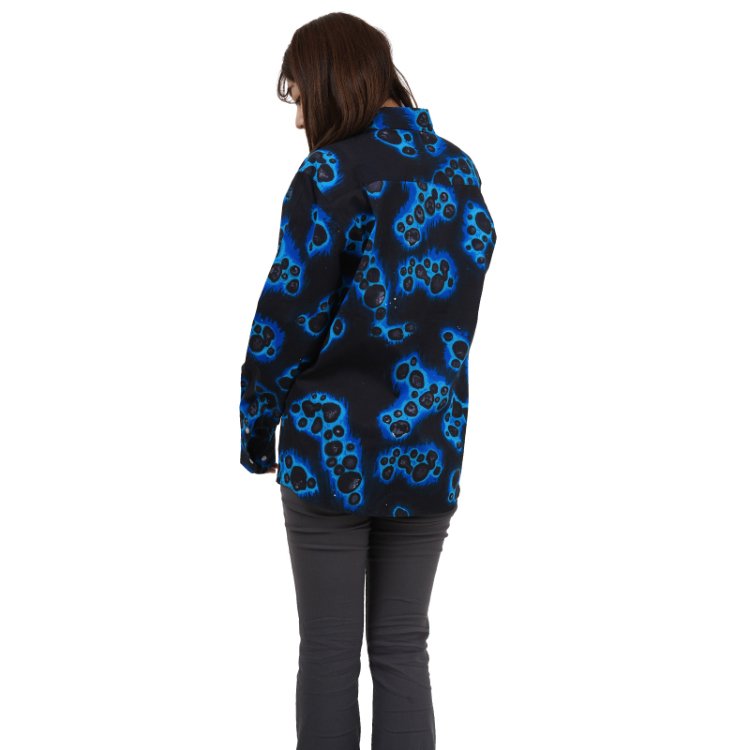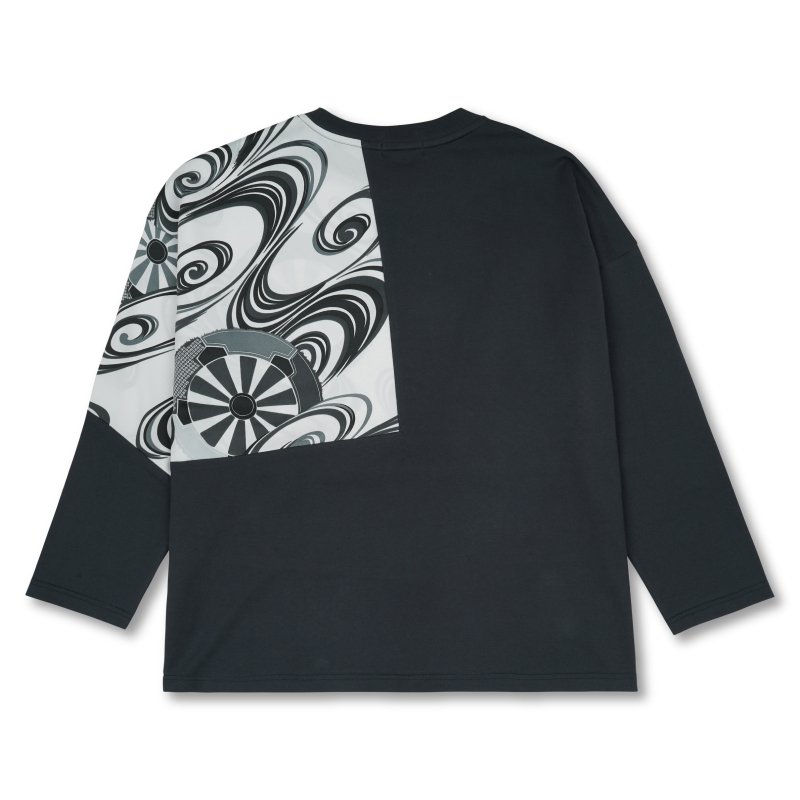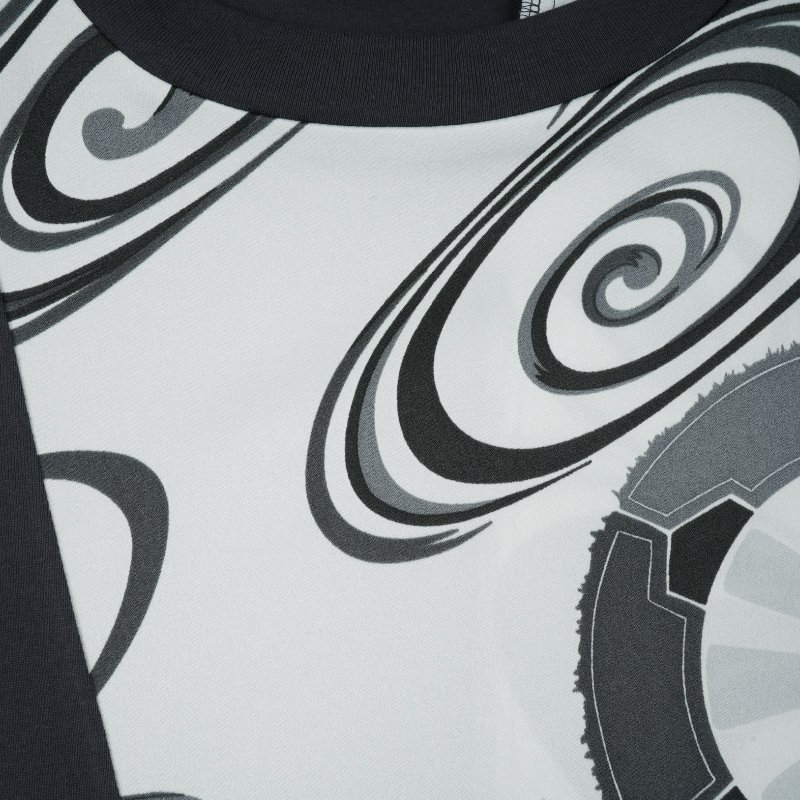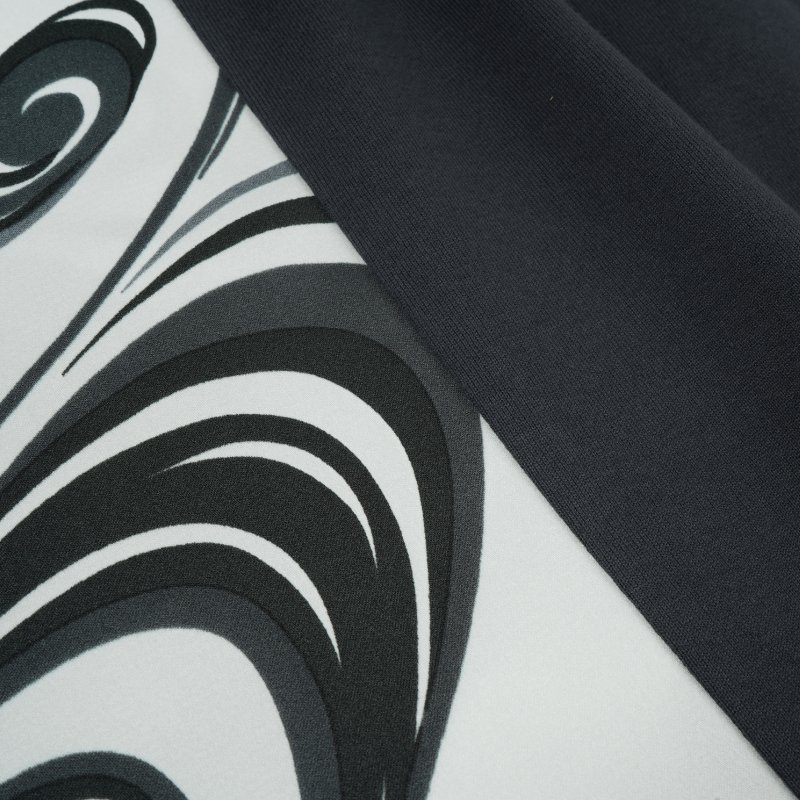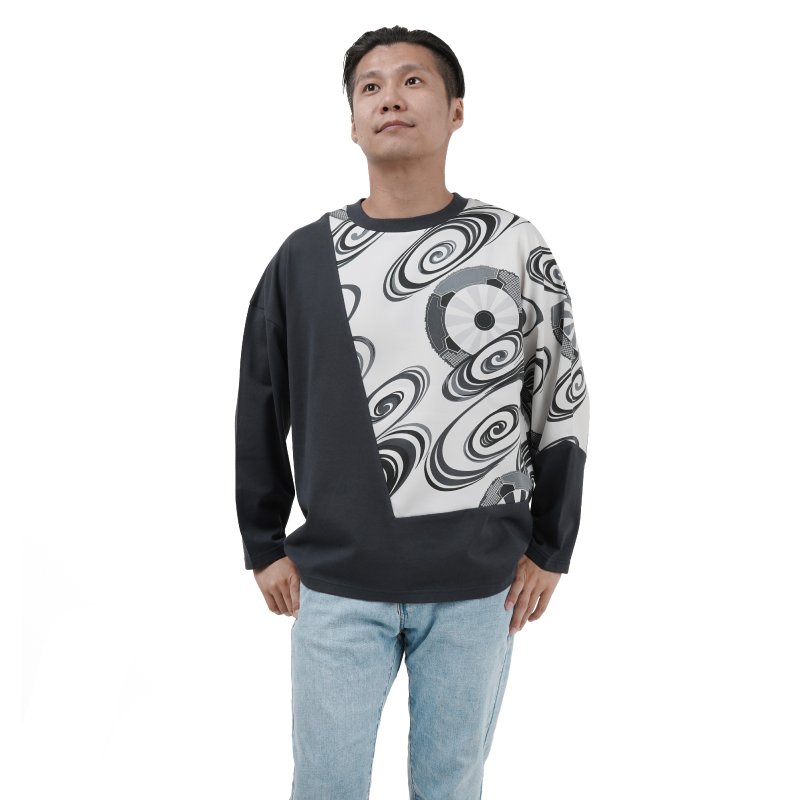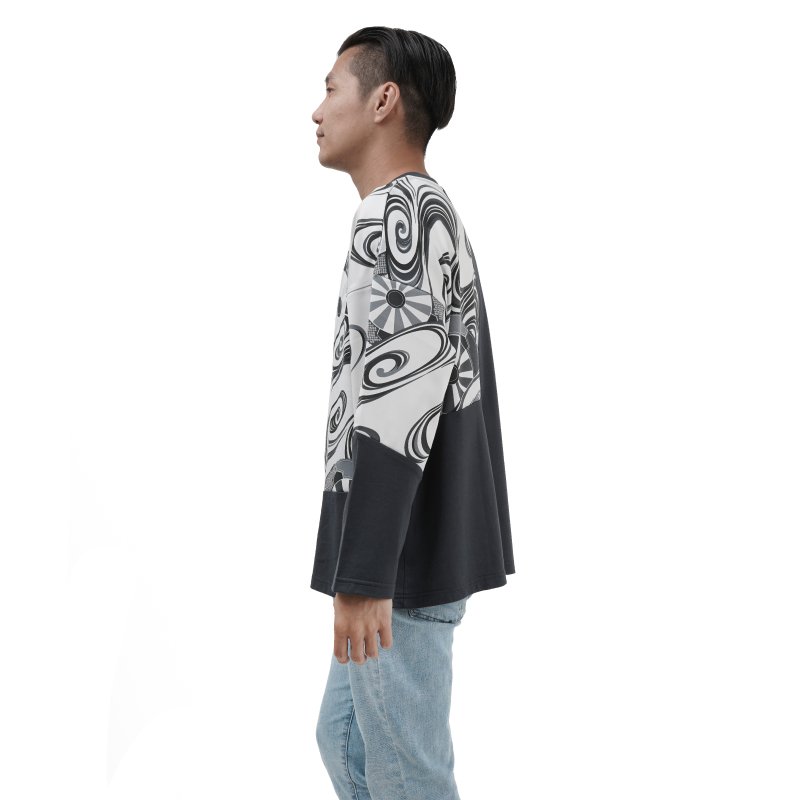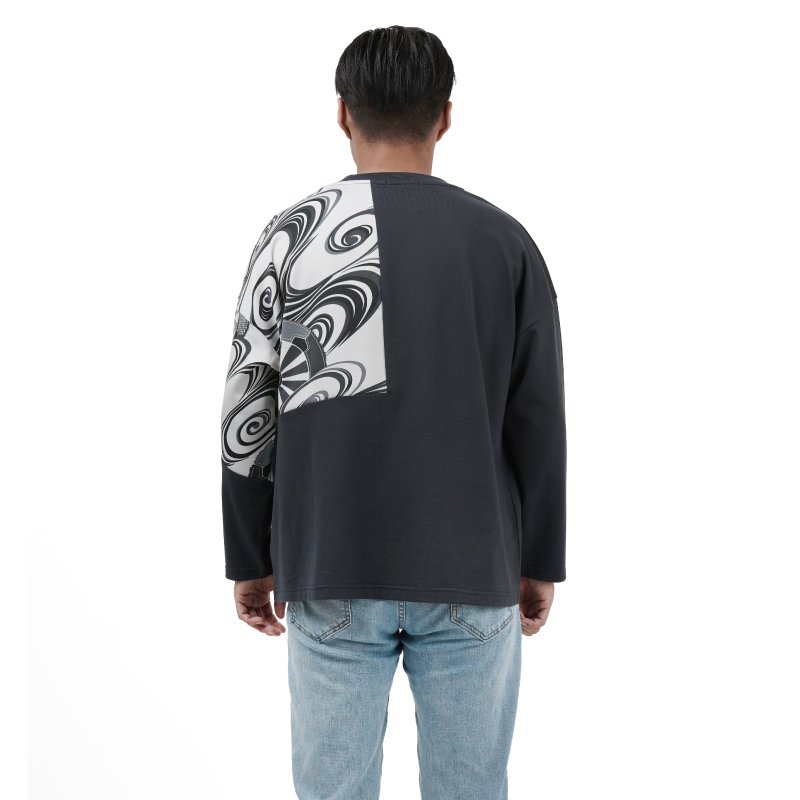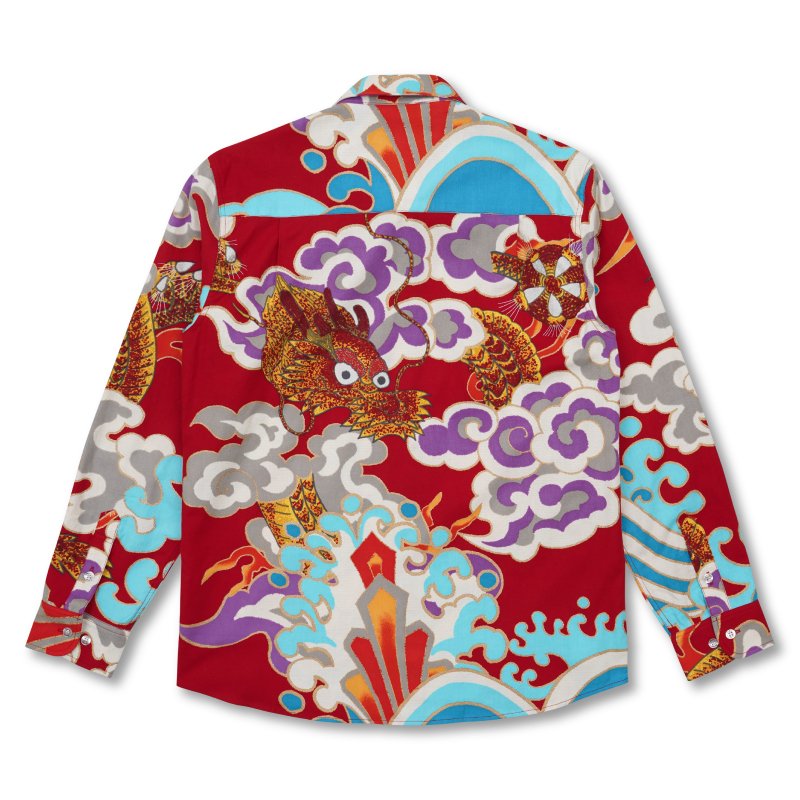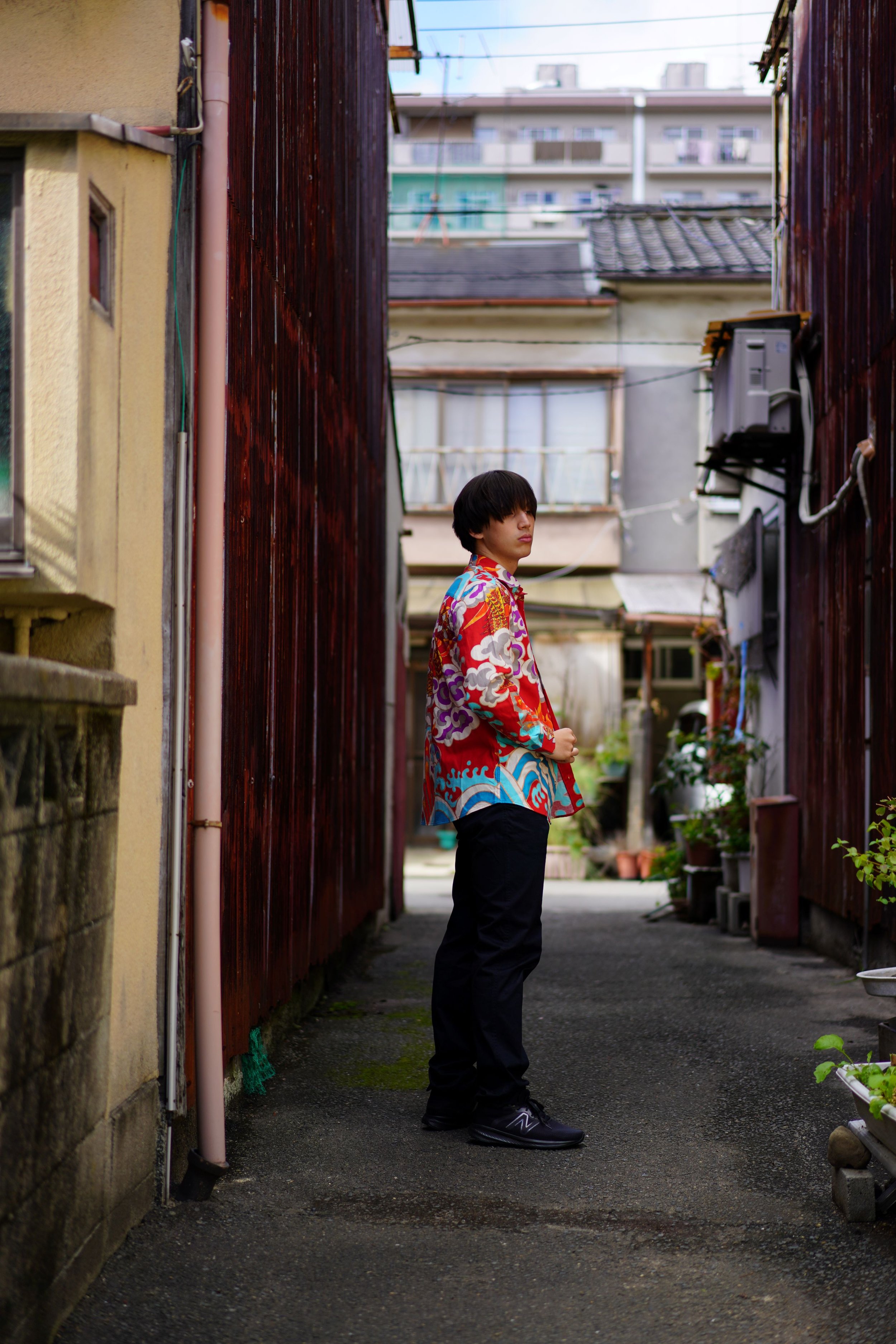" Allure of Tai " Men's Short Sleeve Button-Down Shirt (Blue)
Color / White and Blue Care Instruction
Japanese name/ 鯛尽くし文様 ( Tai tsukushi mon'yō )
-About-
Sea bream has been revered in Japanese culture as a symbol of good fortune, due to its name resembling the word for "auspicious." Red objects are believed to ward off evil, which is why sea bream is featured in celebratory events like New Year's meals and weddings.
Since the Heian period, sea bream has been associated with wealth and nobility, often enjoyed by aristocrats and represented in kimonos and pottery. Known as the "king of fish," its popularity grew during the samurai era, where it was linked to bravery and even sent to battle as a prayer for victory.
In the Edo period, sea bream patterns became common in kimono designs for celebrations and were often depicted in ukiyo-e art. This symbol of "auspiciousness" also appeared in traditional performing arts such as kabuki and rakugo.
Despite the influences of the Meiji period, the sea bream motif remains a representation of traditional Japanese culture, often seen on kimonos, accessories, and as symbols of "big catches" on fishing flags. The arrangement of sea bream is considered lucky, and many believe that wearing it like Ebisu, one of the Seven Lucky Gods, brings good fortune and blessings.
・98% Cotton 2% Polyurethane
( Check pattern / 100% Cotton )
・Made in Japan
・Urban style
・Hand-wash gently
・Currency : US Dollar (USD)
Color / White and Blue Care Instruction
Japanese name/ 鯛尽くし文様 ( Tai tsukushi mon'yō )
-About-
Sea bream has been revered in Japanese culture as a symbol of good fortune, due to its name resembling the word for "auspicious." Red objects are believed to ward off evil, which is why sea bream is featured in celebratory events like New Year's meals and weddings.
Since the Heian period, sea bream has been associated with wealth and nobility, often enjoyed by aristocrats and represented in kimonos and pottery. Known as the "king of fish," its popularity grew during the samurai era, where it was linked to bravery and even sent to battle as a prayer for victory.
In the Edo period, sea bream patterns became common in kimono designs for celebrations and were often depicted in ukiyo-e art. This symbol of "auspiciousness" also appeared in traditional performing arts such as kabuki and rakugo.
Despite the influences of the Meiji period, the sea bream motif remains a representation of traditional Japanese culture, often seen on kimonos, accessories, and as symbols of "big catches" on fishing flags. The arrangement of sea bream is considered lucky, and many believe that wearing it like Ebisu, one of the Seven Lucky Gods, brings good fortune and blessings.
・98% Cotton 2% Polyurethane
( Check pattern / 100% Cotton )
・Made in Japan
・Urban style
・Hand-wash gently
・Currency : US Dollar (USD)
Color / White and Blue Care Instruction
Japanese name/ 鯛尽くし文様 ( Tai tsukushi mon'yō )
-About-
Sea bream has been revered in Japanese culture as a symbol of good fortune, due to its name resembling the word for "auspicious." Red objects are believed to ward off evil, which is why sea bream is featured in celebratory events like New Year's meals and weddings.
Since the Heian period, sea bream has been associated with wealth and nobility, often enjoyed by aristocrats and represented in kimonos and pottery. Known as the "king of fish," its popularity grew during the samurai era, where it was linked to bravery and even sent to battle as a prayer for victory.
In the Edo period, sea bream patterns became common in kimono designs for celebrations and were often depicted in ukiyo-e art. This symbol of "auspiciousness" also appeared in traditional performing arts such as kabuki and rakugo.
Despite the influences of the Meiji period, the sea bream motif remains a representation of traditional Japanese culture, often seen on kimonos, accessories, and as symbols of "big catches" on fishing flags. The arrangement of sea bream is considered lucky, and many believe that wearing it like Ebisu, one of the Seven Lucky Gods, brings good fortune and blessings.
・98% Cotton 2% Polyurethane
( Check pattern / 100% Cotton )
・Made in Japan
・Urban style
・Hand-wash gently
・Currency : US Dollar (USD)
If there is anything we can help you with, please feel free to let us know.
MAIL to : Pagong Kyoto
Contact Form >> www.pagongkyoto.com/contact













